
Paved, gravel, natural surface – trails take on a variety of forms. They can traverse great distances into the backcountry, travel through an urban park, or roam through local neighbourhoods. Historically, trails were used for the transport of goods and livestock between local villages and towns. Walking for leisure was a luxury, mostly reserved for those with garden paths or access to local forested trails. Recreational walking grew in popularity in North America at the end of the 19th century and gained traction post-war in the 20th century. The environmental movement of the 1960s and 1970s further inspired people to seek time outdoors in nature for relaxation and fitness.
Nowadays trails are tourist attractions and community refuges for outdoor recreation. Whether planning a long-day hike to a mountain lake, or a short dog-walk close to home, I love to explore new and familiar trails.
A note about wildlife…
Wildlife can be encountered at any time while on trails. Human-wildlife coexistence is integral to safe and enjoyable recreation that also promotes wildlife conservation.
What is human-wildlife coexistence?
It is a sustainable state that encourages the co-adaption of humans and wildlife that live in shared landscapes. Regarding hiking, it seeks to ensure wildlife conservation while promoting safe human recreation. When planning for your hikes, please keep the local wildlife in mind and leave no trace.
Jill's Top 3 Hikes in Manitoba:
Manitoba is ecologically much more diverse than people realize! Our province ranges from open prairie grasslands to Tundra and even borders an ocean! To outline some incredible variation in ecosystems I’ve chosen three hikes that represent three unique geographic regions and ecosystems. Black bears are common on some of the hikes that I am recommending, so make sure you know how to be wildlife smart and avoid interacting with bears. A bear habituated and used to being around people often becomes a dead bear – so being bear smart is about their safety and yours. Make sure to always check local advisories and warnings regarding weather and wildlife before heading out on your hike.
1) Hunt Lake Trail
Location: Whiteshell Provincial Park
Distance: 12.6km out and back
Elevation: 210m
Type: Moderate day hike
Difficulty: Moderate (rated as difficult due to the uneven terrain).
Website: Manitoba Parks
Ecozone: Lake of the Woods, Boreal Shield
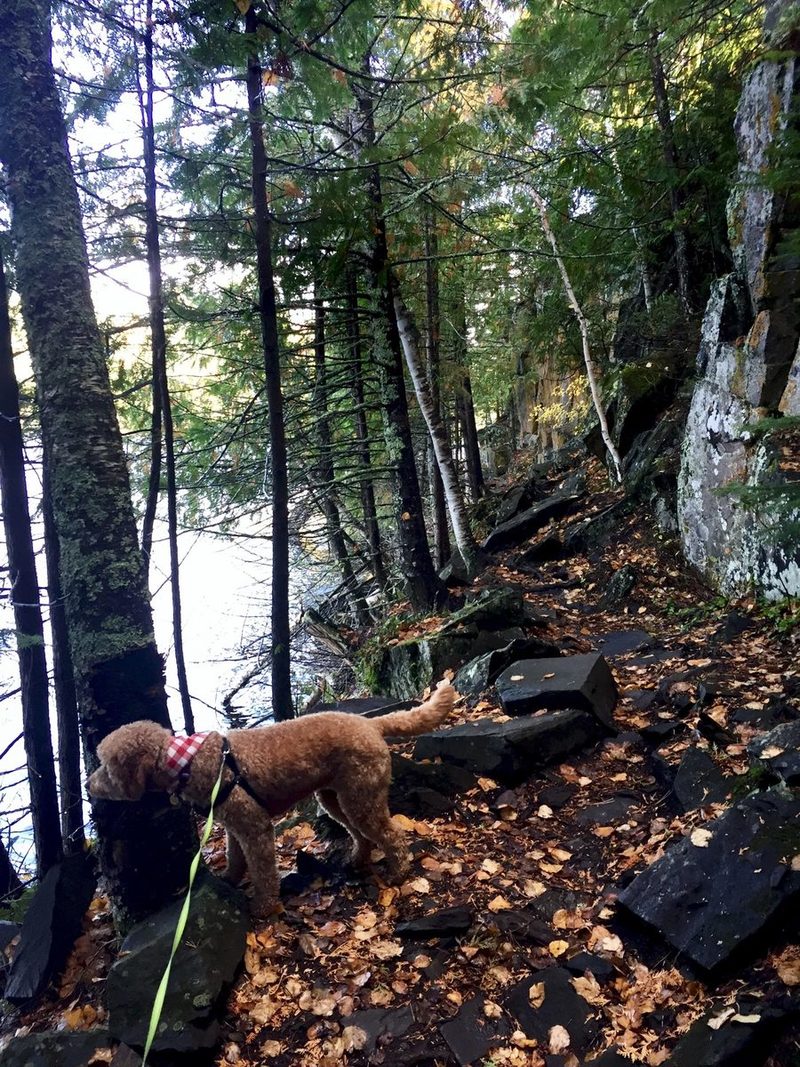
The trail begins at the Hunt Lake Parking lot and follows the Eastern edge of West Hawk Lake for the majority of the trail. West Hawk Lake was formed by a meteorite impact, making it Manitoba’s deepest lake. As a result, the terrain around the lake is rugged a features granite cliffs along the trail. There are several sections of steep rocks, a few boggy areas (especially in spring) and the terrain is generally uneven. Make sure to wear hiking boots and bring bug spray depending on the season. The majority of the hike is in the shade and next to the lake, which is great if some of your hiking companions have four legs. Make sure dogs remain on leash while hiking, since this trail is in bear country.
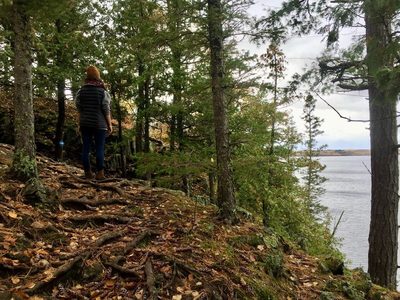

You’ll encounter beautiful outcrops of granite and Precambrian Canadian shield all along the hike and see trees interwoven through the rocks over time. Along this trail you’ll find cedars and the westernmost Eastern White Pine in Canada. These giant Eastern White Pines tower over the forest canopy and can be easily seen at a distance. This ecosystem is known as the Manitoba Lowlands Natural Region, and the park is classified as a Natural Park – which means that the purpose of the park is to preserve this ecosystem.
At the end of the trail you’ll find a cook shelter where you can make a fire and enjoy the views. All along the trail you’ll find stunning views and places suitable to go for a swim on a hot day.
Take your time to enjoy this hike and bring along a picnic to enjoy at the halfway point.
2) Pisew Falls to Kwasitchewan Falls Hiking Trail
Location: Pisew Falls Provincial Park (74 km / 46 mi. south of Thompson on PTH 6)
Distance: 27.4km loop
Elevation: 678m
Type: Multi-day hike, backcountry camping
Difficulty: Difficult
Website: Manitoba Parks
Ecozone: Hayes River Upland, Boreal Shield
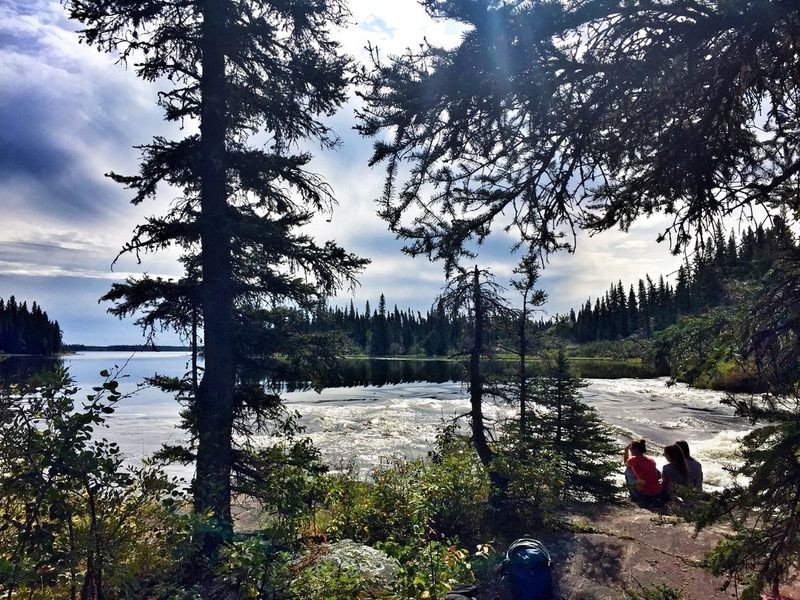
Come prepared for this hike as wet weather can change estimated hiking times dramatically, and signage can be difficult to follow at times. Hikers can take the slightly shorter Philips Lake Route or the Grass River route to get to Kwasitchewan Falls, Manitoba’s highest waterfall. You’ll hike amidst pine, spruce, poplar and tamarak trees.
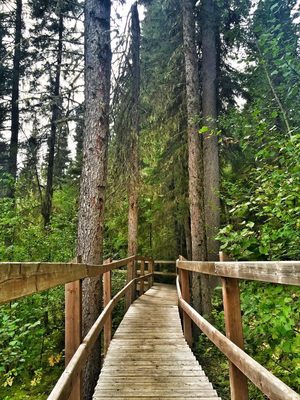
Black bears, wolves and cougar are frequently reported in the area. Make sure to follow all hiking recommendations from Manitoba Parks and check out the First Steps section of the trail guide to know how to prepare.
Not quite ready for an overnight hike? No problem! This hike begins at Pisew Falls, which is easily accessible after a short but stunning walk along a boardwalk to the falls. The name Pisew is from the Cree word for lynx, as the hissing sound of the falls resembled that of the lynx. Continue along the Grass Trail lake side of the hike to follow a well-travelled route that Indigenous peoples showed to fur traders. Consider doing an out and back along this section of the trail, but be mindful to bring proper supplies and expect your route to take longer than expected.
Note: The backcountry campsites are also accessible by canoe.
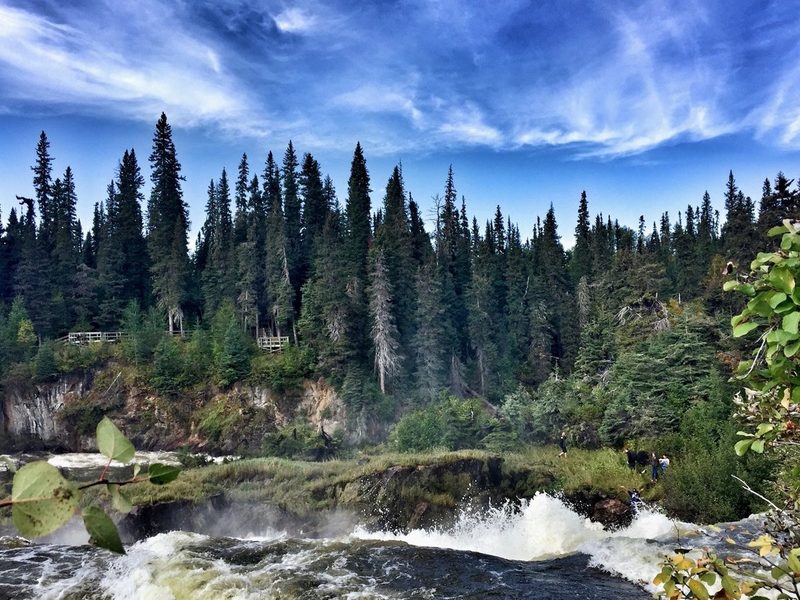
3) Devils Punch Bowl – Spirit Sands
Location: Spruce Woods Provincial Park. From Winnipeg: travel west on Highway 1, turn south on P.T.H. 5 for 29 kilometres. From P.T.H. 2 west turn north on P.T.H. 5 for 13 kilometres. Kiche Manitou is approximately 180 kilometres from Winnipeg.
Distance: 10km
Type: Loop, day hike
Difficulty: Moderate
Website: Manitoba Parks Trail Brochure
Ecozone: Lake Manitoba Plain, Aspen Parkland
Note: There is an equestrian campground for horseback riders.
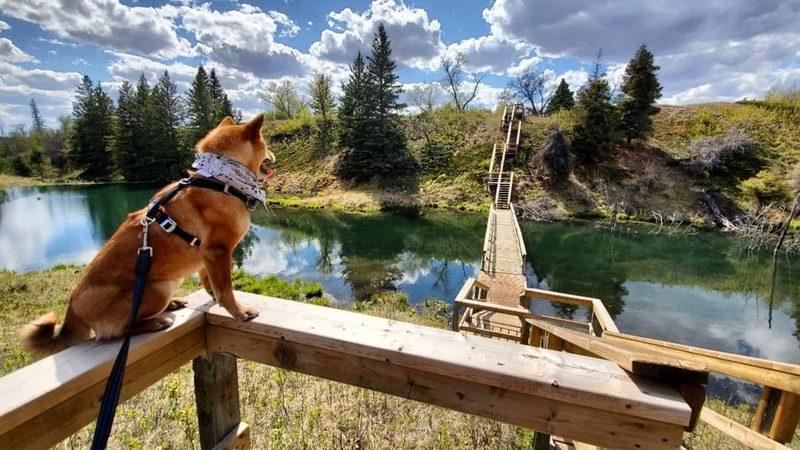
Photo credit: Lawrence Medel
The trail passes through a varied landscape of sand dunes, grassland and forested area. You’ll find several species of snakes in the park along with Manitoba’s only lizard: the Prairie Skink! The trail ends at the Devil’s Punch Bowl, which gets its blue-green colour and is fed from an underground stream. While the site is known as Manitoba’s desert, it actually gets nearly twice the amount of annual precipitation of what a desert would get. This results in an interesting combination of biodiversity and the varied landscape that makes this hike visually stunning. Go in autumn, when temperatures are cooler (shade can be limited along the trail) and the fall foliage is on full display.
The full loop is 10km, but there are several other options for trails in the park. Poison ivy is prevalent in the park – stay on the trail.
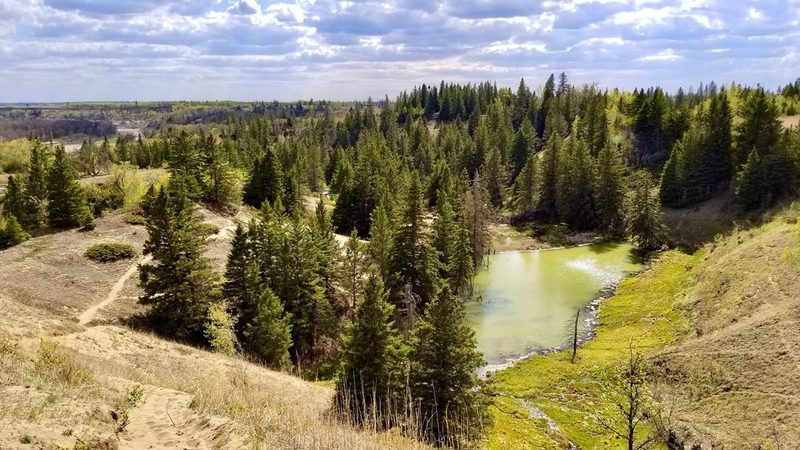
Photo credit: Lawrence Medel
Join us this Fall, as our team will be taking a special hike in support of THE NATIONAL HIKE FOR THE ENVIRONMENT.
This nation-wide event will help re-connect people across the country with the natural world that sustains us, while raising support for the challenging work of Sierra Club Canada Foundation and our efforts to fight for urgent environmental protections.
Want to be a Hiking Hero?
1) Sign up on our CanadaHelps page as an individual or part of the Prairie Chapter Team.
2) Ask 10 friends to donate to your cause
3) Go for a hike! This can be on a mountain, on a favoured walking trail, indoors with your walking group, or even around your neighbourhood.
Dr. Jill Bueddefeld, Prairie Executive Co-Chair

Dr. Jill Bueddefeld is currently a post-doctoral fellow in the Faculty of Kinesiology, Sport, and Recreation at the University of Alberta in Edmonton, Canada. Her research explores how people learn in nature-based contexts and how that learning can be translated to behaviour change. Specifically, she specializes in free-choice learning and evaluation. Having grown up on a small grain and oilseed farm in southern Manitoba she believes people are an important part of landscapes and seeks to find ways to help people live more thoughtful, intentional, and sustainable lives.
